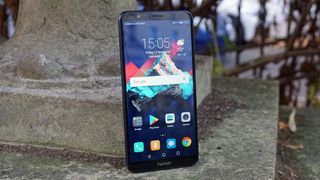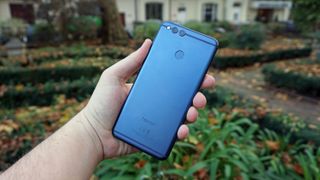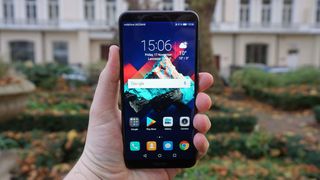Honor 7X review
It's time to welcome 18:9 to the mid-range
OUR VERDICT
The Honor 7X is the first mid-range device to bring an 18:9 ratio display to the market, and that’s impressive considering the price point. A few issues with performance, and the absence of NFC, mean it’s not a must-have phone though.
FOR
- Vibrant 18:9 display
- Premium feel metal design
- Mid-range price
AGAINST
- Stuttering performance
- Slow to charge
- No NFC so can’t use Android Pay
Honor has previously blown us away with what it can put in cheaper handsets, and the Honor 7X has made another leap forward by bringing an elongated 18:9 bezel-less display to the mid-range market for the first time.
This is especially surprising as the Honor 9 – which the company launched earlier this year – still has a ‘standard’ 16:9 display, unlike most other flagship devices this year.
Following on from the Honor 6X was going to be a hard task for the brand – that was a great phone, particularly if you want a cheaper handset with good spec inside. So does the Honor 7X innovate enough to make it another impressive affordable phone?
Honor 7X price and release date

The Honor 7X sits at the lower end of mid-range devices and will cost $199 or £269.99 (about AU$475) SIM-free. It’s up for pre-order now at the Honor website, and if you order on December 5 you’ll get the phone by December 15 in both the US and UK, but we don’t have any details on the Australian release or news for other markets yet.
If you buy the Honor 7X in the UK (from Argos, Amazon, Very or the Honor store) you’ll get a free pair of headphones worth £69.99, although you’ll need to be quick as that offer is likely to be available for a limited time only. We don’t currently know if that deal will be available in other markets.
We also know that in the UK you’ll be able to buy the phone on contract from Three at the start of next year, although we don’t know the exact release date.
Design and display

The Honor 7X features a fully metal design that's attractive, although the back of the phone is flat, so it doesn't sit in the hand as comfortably as the Honor 6X did. It does make it thinner than a lot of other popular phones, at 4.6mm, and if you're looking for a slimline device this is an appealing option.
The back panel is metal, but it doesn’t have the same close-to-high-end feel as, say, the Nokia 6. Despite the overall finish on the Honor 7X, the metal doesn't feel as satisfying as when you're holding the glass-backed Honor 9.
The fingerprint sensor is located on the rear or the handset, and we found it easy to reach when holding the phone.

That scanner tech works quickly, but if you’ve got the phone on your desk it’s generally quicker to enter your PIN or unlock pattern on the screen than it is to pick the phone up so you can hit the sensor.
On the bottom edge of the device is a 3.5mm headphone jack, which is welcome if you use wired headsets. You'll find the micro USB port and speaker grille there too.

Honor is toting the 7X's display as a major upgrade, and it's certainly impressive that the company has managed to squeeze an almost 6-inch display into a body that would traditionally accommodate a 5.5-inch screen.
The 5.93-inch screen extends closer to the sides of the device than some other phones; it's not as attractive as the way the iPhone X or Samsung Galaxy S8adopt the 18:9 aspect ratio, but that’s to be expected considering this phone is much cheaper.
We found the screen to be bold and vibrant with a high resolution. It isn't as impressive as the screens on a lot of flagship devices, with a Full HD+ 2160 x 1080 resolution equating to 408 pixels per inch, but it’s a very good display considering the mid-range price of this phone.

That resolution is the same as you get on the more expensive OnePlus 5T, but comparing the two phones side by side you can see that the Honor is a little dimmer, and doesn’t have the vibrancy of the OnePlus.
One irritation with the screen is that most apps will default to the 16:9 screen ratio, and you’ll sea blue notification at the bottom of the screen, prompting you to tap to switch to full-screen mode.
It feels like an unnecessary step when we wanted to use all apps with the 18:9 display. For example, when setting up a watch within the Android Wear app we tapped the option to switch to full-screen mode, and part-way through the setup process it rebooted the app and kicked us back to the start.
We didn’t find any apps that wouldn’t embrace the extended screen, but you’ll have to wait a few seconds for apps to reboot when you press that button, which isn’t very helpful when a lot of other devices do this by default.








0 comments: